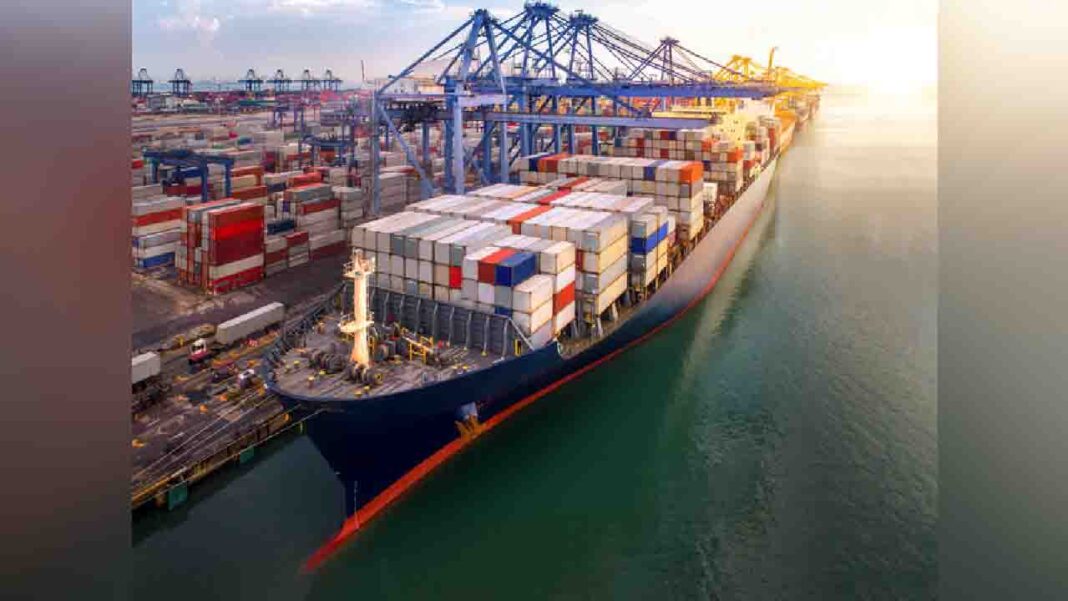(Commonwealth) _ According to two government sources, India aims to give financial subsidies, lower taxes, and other incentives to boost its shipbuilding sector as part of an effort to alleviate the pain of high freight prices for the country’s manufacturers.
According to government officials, the proposals include incentives to build at least 50 additional vessels, as well as awarding the sector “infrastructure status,” which would help with bank funding. This might include incentives to develop tiny vessels and encourage battery-powered small vessels, with the goal of reducing ship diesel use and carbon emissions in the future years, they added.
They noted that a 10-billion-rupee ($123 million) marine development fund is also expected to be formed, but provided no additional specifics. Finance Minister Nirmala Sitharaman is poised to make the announcement when she submits the annual budget for 2023/24 to parliament on Feb. 1, according to a senior government official with direct knowledge of the deliberations.
The Indian government is reportedly considering a proposal to overhaul its tax system in the shipping industry, with the aim of increasing investment and improving competitiveness. The proposal comes after a government panel advised the finance ministry that current tax restrictions are discouraging investment in the sector, particularly when compared to more favorable tax regimes in other countries such as Singapore, Malta, Cyprus, and Panama.
The proposed tax reforms would involve a reduction or elimination of certain taxes, such as income tax and Goods and Services Tax (GST), for companies operating in the shipping industry. This move is expected to attract more foreign investment and help Indian carriers compete with their global counterparts.
The plans have reportedly received the approval of Prime Minister Narendra Modi’s economic advisors, who announced the Maritime Vision-2030 in 2020, with the goal of enhancing domestic shipping and port capacity. The proposed tax reforms are seen as a key step in achieving this goal. It is important to note, however, that these details are still subject to change as budget deliberations continue. Nonetheless, the proposed tax reforms have the potential to significantly impact the shipping industry in India, by making it a more attractive destination for investment and enhancing its competitiveness in the global market.
The cost of ship manufacture in India was up to 20% lower than in Indonesia and the Philippines, according to the group, which suggested a reassessment of tax policies. Domestic shipping carried less than 7% of export-import cargo in 2019/20, according to industry estimates, and it accounts for less than 1% of world capacity, compared to China’s 16% share.
The Federation of Indian Export Organizations (FIEO) and the shipbuilding sector have requested the concessions, stating that India has to boost its maritime industry due to the mounting dangers of expanding commerce with sanctions-hit Russia. According to FIEO director general Ajai Sahai, India’s exporters and importers spent about $100 billion in freight last year, nearly twice the amount paid three years before.
“Indian exporters are concerned about increased shipping charges on routes to Russia and neighboring countries, which have risen up to 60% since the Ukraine war, while rates on other routes are declining,” he added. He noted that if government incentives assisted private enterprises expand the domestic shipping industry, India might save at least $25 billion in foreign money each year.
India has a significant presence in the shipbuilding industry, with over 35 shipbuilding businesses operating in the country, including both private and state-owned enterprises. These shipyards have the capability to construct a wide range of vessels, including bulk carriers, tankers, offshore support vessels, and naval ships.
In addition to shipbuilding, India’s marine freight industry comprises a fleet of over 1,500 boats, including both coastal and inland vessels, with a combined gross tonnage capacity of approximately 13 million tonnes. These vessels are primarily used for the transportation of goods and materials along India’s extensive coastline, as well as on its rivers and inland waterways.
India’s shipbuilding and marine freight industries are of strategic importance to the country, as they contribute to the growth and development of the domestic economy, particularly in terms of trade and commerce. These industries also provide employment opportunities and contribute to the development of the country’s technological and industrial capabilities.
However, India’s shipbuilding and marine freight industries face challenges, including stiff competition from other countries, such as South Korea and China, and the need for significant investments in infrastructure and technology. Despite these challenges, India’s government has set ambitious targets for the development of these industries, including the Maritime Vision-2030 plan, which aims to enhance domestic shipping and port capacity, as well as promote the growth of the country’s shipbuilding industry.
















